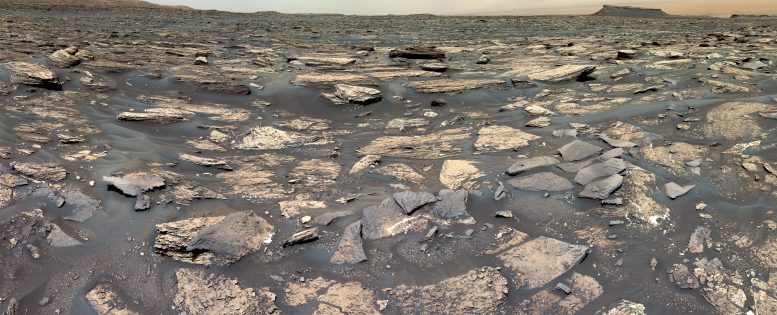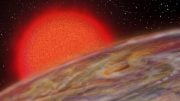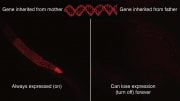
NASA’s Curiosity rover continues to search for signs that Mars’ Gale Crater conditions could support microbial life. Credit: NASA/JPL-Caltech/MSSS
Manganese-rich sandstones discovered by NASA’s Curiosity rover indicate there were once habitable conditions in the Gale Crater on Mars.
A research team using the ChemCam instrument onboard NASA’s Curiosity rover discovered higher-than-usual amounts of manganese in lakebed rocks within Gale Crater on Mars, which indicates that the sediments were formed in a river, delta, or near the shoreline of an ancient lake. The results were published on May 1 in the Journal of Geophysical Research: Planets.
“It is difficult for manganese oxide to form on the surface of Mars, so we didn’t expect to find it in such high concentrations in a shoreline deposit,” said Patrick Gasda, of Los Alamos National Laboratory’s Space Science and Applications group and lead author on the study. “On Earth, these types of deposits happen all the time because of the high oxygen in our atmosphere produced by photosynthetic life, and from microbes that help catalyze those manganese oxidation reactions.
Martian Oxidation Mysteries
“On Mars, we don’t have evidence for life, and the mechanism to produce oxygen in Mars’s ancient atmosphere is unclear, so how the manganese oxide was formed and concentrated here is really puzzling. These findings point to larger processes occurring in the Martian atmosphere or surface water and shows that more work needs to be done to understand oxidation on Mars,” Gasda added.
ChemCam, which was developed at Los Alamos and CNES (the French space agency), uses a laser to form a plasma on the surface of a rock, and collects that light in order to quantify elemental composition in rocks.
Sedimentary Insights
The sedimentary rocks explored by the rover are a mix of sands, silts, and muds. The sandy rocks are more porous, and groundwater can more easily pass through sands compared to the muds that make up most of the lakebed rocks in the Gale Crater. The research team looked at how manganese could have been enriched in these sands—for example, by percolation of groundwater through the sands on the shore of a lake or mouth of a delta—and what oxidant could be responsible for the precipitation of manganese in the rocks.
On Earth, manganese becomes enriched because of oxygen in the atmosphere, and this process is often sped up by the presence of microbes. Microbes on Earth can use the many oxidation states of manganese as energy for metabolism; if life was present on ancient Mars, the increased amounts of manganese in these rocks along the lake shore would have been a helpful energy source for life.
Mars and Earth: A Comparative View
“The Gale lake environment, as revealed by these ancient rocks, gives us a window into a habitable environment that looks surprisingly similar to places on Earth today,” said Nina Lanza, principal investigator for the ChemCam instrument. “Manganese minerals are common in the shallow, oxic waters found on lake shores on Earth, and it’s remarkable to find such recognizable features on ancient Mars.”
Reference: “Manganese-Rich Sandstones as an Indicator of Ancient Oxic Lake Water Conditions in Gale Crater, Mars” by P. J. Gasda, N. L. Lanza, P.-Y. Meslin, S. N. Lamm, A. Cousin, R. Anderson, O. Forni, E. Swanner, J. L’Haridon, J. Frydenvang, N. Thomas, S. Gwizd, N. Stein, W. W. Fischer, J. Hurowitz, D. Sumner, F. Rivera-Hernández, L. Crossey, A. Ollila, A. Essunfeld, H. E. Newsom, B. Clark, R. C. Wiens, O. Gasnault, S. M. Clegg, S. Maurice, D. Delapp and A. Reyes-Newell, 1 May 2024, Journal of Geophysical Research: Planets.
DOI: 10.1029/2023JE007923
Funding: NASA Jet Propulsion Laboratory









Hello to the space explorers in America, Mars was not next to the sun at the beginning of the formation of the sun, it was next to one of the stars of the Great Ghriba, the stars of the Milky Way, and so was the earth. I have already talked about this important issue. A square cube has six levels and the dice they use for the game does not have more than 12 digits, and this is strange. The earth has 12 towers and numbers 1 and 2 are the beginning of counting, and when these two numbers are placed together, they become 12. These two numbers are the first numbers. They are one digit, the last one digit numbers are 89 and the first verses that are arranged in Surah Allah is 89 which refers to someone who is the last messenger of God and they were waiting for him to appear, but when he came, they left his book behind and disbelieved in God. May God curse the disbelievers
?
If the Earth was formed elsewhere and was captured by the Sun, it would have to fall towards it in a spiral, but it is moving away!
In the hexadecimal system, the numbers end with E and F. Numbers also exist in other systems.
Tristram Carlyon: Might I humbly suggest that regarding the three comments on this particular article so far,the only one that makes any sense is the one consisting of a single interrogative symbol?
Yes, and the other two comments are good examples of why you should never write comments after eating certain types of mushrooms.
In Greek the first two numbers are the same as the first two letters: alpha and beta. Make that fit!